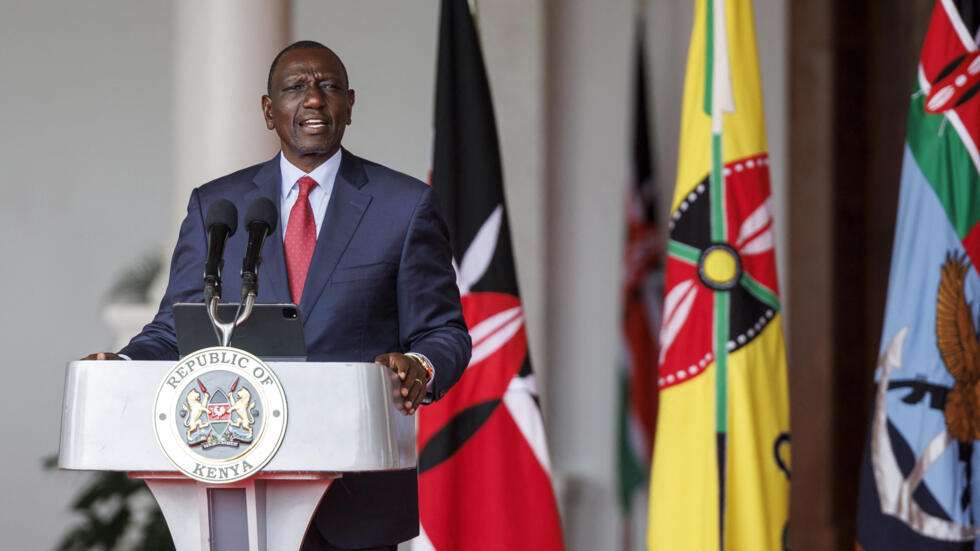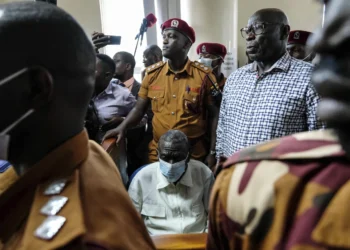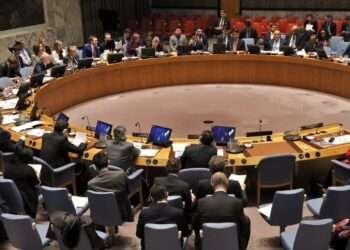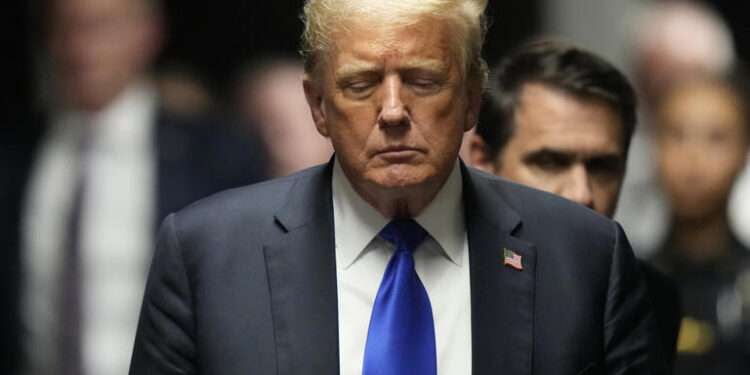Kenyan police fired tear gas at protesters in Nairobi on Thursday, as demonstrators took to the streets demanding the resignation of President William Ruto.
The protests coincided with the swearing-in of a new Cabinet, a move Ruto had hoped would quell rising discontent but which instead seemed to stoke further anger.
The unrest in Kenya’s capital follows months of mounting frustration over Ruto’s leadership, particularly his handling of the economy.
The president had attempted to pacify critics by dismissing nearly all his ministers and including opposition members in what he described as a “broad-based” government.
However, this gesture appears to have done little to soothe the simmering discontent among many Kenyans.
On Thursday, August 8, businesses in Nairobi shuttered their doors, and public transport vehicles typically bustling through the central business district were conspicuously absent.
The streets, usually teeming with activity, were eerily quiet as police set up roadblocks to restrict movement into the city. The president’s office, where the new ministers were officially sworn in that morning, remained heavily guarded and off-limits to the public.
While Nairobi bore the brunt of the unrest, other parts of the country remained relatively calm.
In Kisumu, a lakeside city known as an opposition stronghold and a frequent site of past protests, residents largely stayed off the streets.
Some locals cited the inclusion of opposition figures in the new Cabinet as a reason for their decision not to protest.
Civil society organizations and the Law Society of Kenya issued a joint statement emphasizing the importance of upholding human rights during the demonstrations.
They called on the police to refrain from using excessive force, including the deployment of nonuniformed officers and unmarked vehicles, tactics that have been criticized in the past.
“We reiterate the constitutional protection of all persons to peaceably and unarmed to protest, picket, and to present petitions to the authorities,” the statement read.
Ruto’s Plea Fails to Quell Unrest
Despite these calls for restraint, the situation on the ground remains tense. President Ruto, addressing the nation on Wednesday, condemned the protests and urged Kenyans to avoid participating.

He reminded citizens that those seeking change should do so through the ballot box in the 2027 elections.
However, his remarks did little to dissuade activists, who proceeded with plans for an “8/8 Liberation March,” warning that demonstrators would treat nonuniformed police officers as criminals.
“We shall march for our rights, and tomorrow we shall liberate this country,” declared activist Kasmuel Mcoure.
Charlie Robertson, head of macro strategy at FIM Partners, which invests in emerging market debt, noted that Kenya is not alone in facing such economic pressures.
“There are a lot of governments around the world all facing the pain, delayed fiscal pain, from the interest rate hikes that we’ve seen in recent years,” he said, adding that it was “not a surprise that the country [Kenya] might reach a breaking point.”
Indeed, Kenya’s turmoil reflects a broader trend across the African continent, where economic challenges are sparking unrest.
In Nigeria for instance, corruption and rising fuel and food costs, power outages recently triggered violent protests leading to the death of more than a dozen people.
Similarly, Angola is grappling with the need to cut subsidies, while Egypt is under pressure from the International Monetary Fund to implement spending cuts and reforms amid inflation rates exceeding 30%.
As Kenya navigates this period of unrest, the future of Ruto’s presidency hangs in the balance, with many questioning whether the current government can steer the country out of its economic and political crisis.
READ ALSO: Electrochem Ghana Limited to List on Ghana Stock Exchange





















